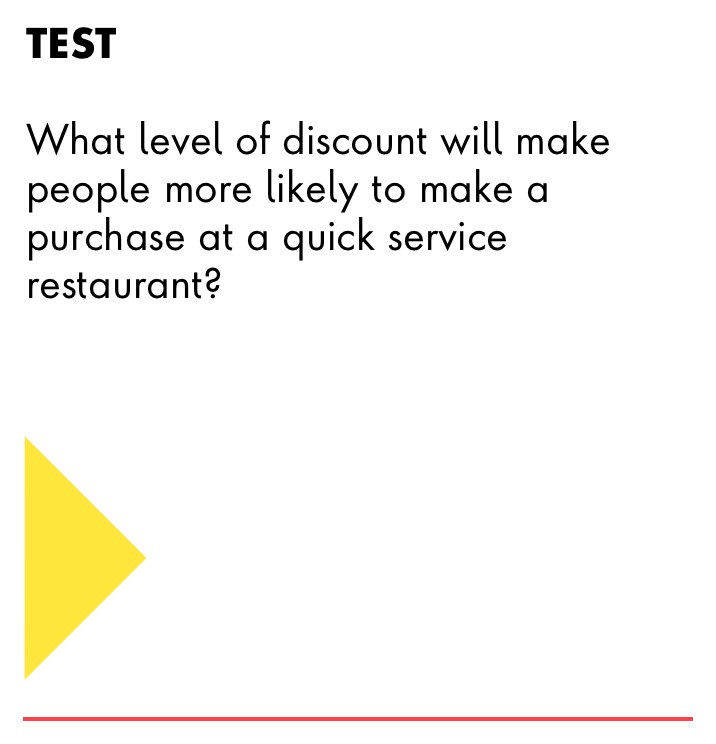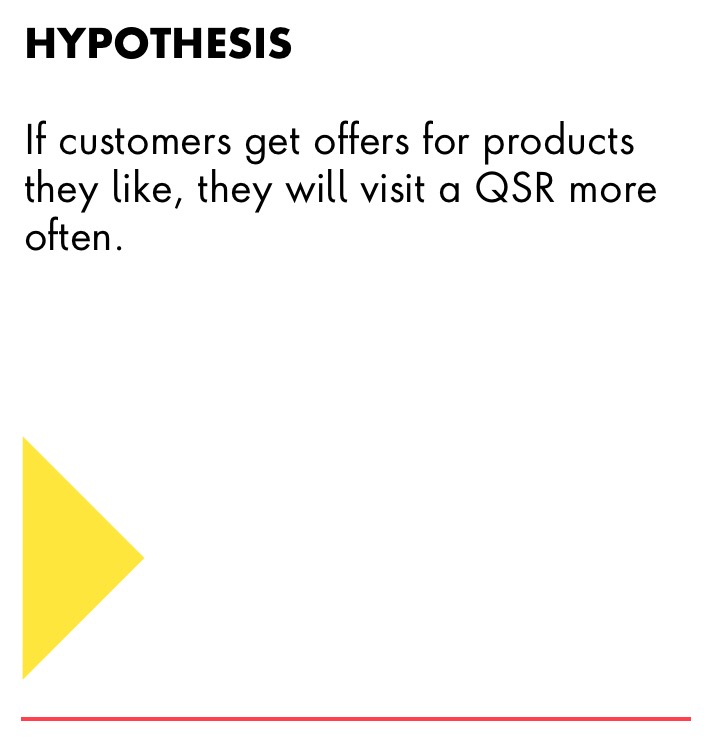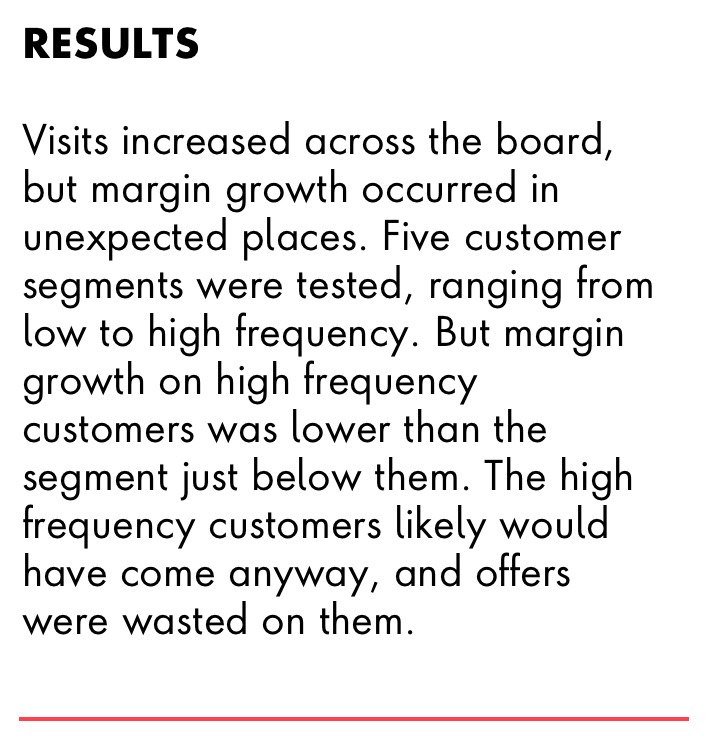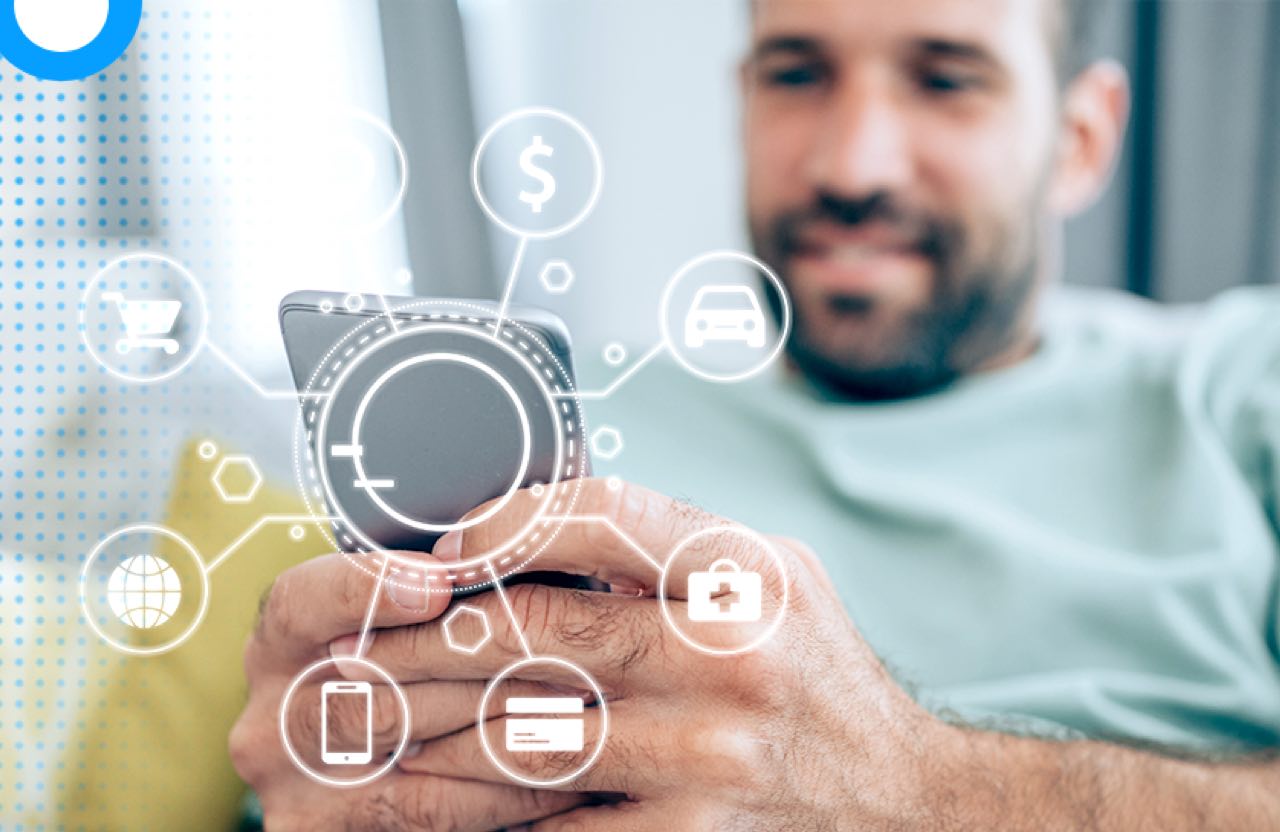What issue can we solve for you?
Type in your prompt above or try one of these suggestions
Suggested Prompt



Solutions
Why Test-and-Learn is a Winning Personalized Marketing Strategy
Why Test-and-Learn is a Winning Personalized Marketing Strategy
Automating test-and-learn helps businesses optimize personalized offers to improve customer experience and maximize effectiveness of marketing campaigns.
Businesses like quick service restaurants (QSRs) captured a significant amount of first-party customer data at the start of the COVID-19 pandemic as new digital technologies like contactless payments expedited delivery, drive-thru and pick-up services. Knowing how to stitch that data together to understand customer behaviors and preferences will help brands successfully grow customer loyalty via personalized offers. However, truly personalized offers remain a challenge for many organizations.
Test-and-learn, as a component of marketing automation, is the solution organizations are searching for, but the process often gets overanalyzed. Some businesses spend years trying to connect disparate data to create a single view of the customer – such as with a customer data platform (CDP). But are they wasting resources and failing to target the right customers with the right offers at the right time?
With myriad communication methods available to consumers, companies that serve personalized offers make purchasing decisions easier and help companies better understand the appropriate customer value exchange. According to a survey from PYMTS.com, more than 46% of high spending, high frequency customers said discounts and offers were a top reason they ordered directly through a restaurant versus a third-party aggregator.
Although discounts may be a top motivator to get customers through the door, data has shown that discounting isn’t always the right approach. Companies should be targeting personalized offers to customers who wouldn’t have otherwise made a purchase rather than offering discounts to people who would have made purchases anyway.
Businesses need to adopt a data-driven, test-and-learn automation approach to create personalized customer experiences and avoid the pitfalls of mass-marketing practices like discounting.

What is test-and-learn marketing automation?
Legacy test-and-learn software has allowed creatives to experiment with messaging, but it typically requires a considerable amount of time and effort to set up, launch and analyze. However, modern test-and-learn automation generates audience-level data with short, high frequency experiments. Marketers learn whether an offer-centric campaign will be profitable in a matter of days or weeks. It’s a low-risk strategy to quickly determine the effectiveness of certain campaigns for both modeling audiences and driving campaign success at scale.
Test-and-learn automation accelerates an organization’s personalization efforts with meaningful data models such as product relevancy, purchase propensity and reengagement of customers who may have churned out of the system. This approach provides specific data and related attributes, allowing companies to delve into audience segments and set up targeted campaigns. The related data models get smarter over time through machine learning and artificial intelligence (AI) while providing marketers with real-time data visualization to help drive insights and future campaign ideation.
The future of marketing will combine AI with strategies such as test-and-learn, which allows marketers to scrutinize the effectiveness of their personalization strategy quickly and accurately. Today’s technology removes the “gut check” and provides assurance that marketers are balancing consumer expectations with business value. For example, test-and-learn can help determine which offer will resonate with a given audience, driving higher average order value or profitability.
Beyond marketing campaigns, test-and-learn automation can also improve an organization’s ability to roll out new features to core audiences while learning how best to implement them. Starbucks, for instance, launched mobile orders at the start of the pandemic and was inundated with orders that stores couldn’t keep up with.
Starbucks executives thought enabling this digital ordering would equate to increased customer convenience, but when the company deployed the new feature, it actually became a bigger challenge. Customers expected to get their beverage as soon as they arrived, but often they had to wait several minutes. With test-and-learn automation, marketers can quickly analyze how to get the intended user action and optimize business operations with a better level of confidence.

How do you implement test-and-learn automation?
Most businesses can use the marketing technology tools they already have to add automation and start testing and learning. It doesn’t always require a massive investment, either. First, determine the business goals and key performance indicators. Is the goal to grow offer redemption, drive revenue incrementally, boost loyalty or simply maximize profits?

Then, follow these five steps to set up an experiment:
- Identify and prioritize within an initial small set of use cases.
- Collect the data for each use case.
- Set up an analytics environment to perform the following.
- Enrich customer data for attributes tied to each use case.
- Create time to explore and define audience segments within the data.
- Leverage available data models tied to relevancy, propensity and churn. - Design and execute test-and-learn experiments.
- Determine whether experiments should scale into larger campaigns.
A large global brand adopted test-and-learn automation as a custom-built solution that was set up in less than four months. Within one year, it generated $42 million to the company’s bottom line in just one market. The brand further developed a culture of experimentation while targeting the right customers with personalized offers that ultimately incentivized them to keep returning.
“Organizations typically spend years developing CDPs without thinking about audience and data modeling with a testing mindset,” said Dan Alpert, vice president at Publicis Sapient. “The martech universe has exploded in growth, with an infinite number of software and tools which need to be pieced together to help organizations effectively connect with consumers to tell meaningful brand stories. The ability to build test-and-learn automation should be at the core of their martech solution.”
“The martech universe has exploded in growth, with an infinite number of software and tools which need to be pieced together to help organizations effectively connect with consumers to tell meaningful brand stories. The ability to build test-and-learn automation should be at the core of their martech solution.”
Dan Alpert , Vice President, Publicis Sapient

Why first-party data is important
First-party data is the starting point for any organization to drive targeted, personalized communications. With a cookieless future on the horizon, growing privacy regulations and security challenges across industries, permissible customer data becomes more critical to harness. However, companies do not need to have a single view of the customer to establish the building blocks for a scalable test-and-learn culture. Test-and-learn automation does not require mountains of stitched data within a formal CDP to be successful.
Instead, most organizations have transactional data, and this data alone can drive marketing intelligence around frequency, relevancy and preference.
“There is such a thing as overindexing on data,” said Rohan Maheshwari, head of delivery, dining and delivery vertical. “Do you really need 100 data points on a customer? Probably not. What’s the uplift after a certain extent? Say, as a hotel marketer, I want to be able to sell guests deals at the hotel restaurant when they’re on vacation or visiting for business. Then it makes sense to have that restaurant transaction data to determine when they’re on business versus leisure based on how much they spend.”
Maheshwari said test-and-learn automation isn’t something marketers can do on their own.
“What we learned at one client where we helped implement test-and-learn automation is they required buy-in from IT even though the marketing team saw value in this,” he said. “Because test-and-learn isn’t a top priority of IT, it’s often a challenge to get them to adopt the approach. When put in context with IT’s existing investment in AI and machine learning to fuel personalization, it can help create cultural change.”

Test-and-learn automation is the ticket to the future of personalization
An old adage is reemerging in the drive toward marketing operations relative to personalization: Fail fast forward, or learning by doing. Organizations that adopt this mentality and business approach experience lower risks and bigger returns, and they ultimately learn more and learn faster about their customers and the impact of driving targeted communications.
Only by employing test-and-learn automation can an organization move swiftly and more efficiently through its learning agenda – especially an organization that stives for better personalization. Without test-and-learn automation, organizations can’t truly consider themselves data-driven, customer-centric businesses.

Solution
How Test-and-Learn Automation Optimizes Campaigns
Revolutionize your campaign strategy with our Test-and-Learn Automation solution for consumer-facing businesses like QSRs.
Related Articles
-
![]()
Insight
What Makes Up a Modern Data Organization?
Man interacting with his life via her phone, from fitness to finance, transportation and more.
-
![]()
Insight
Digital Menu Boards: The Future Has Arrived
Customer data and AI are redefining onsite menu boards. Relevant customer experiences can go a long way to increasing engagement and building loyalty.
-
![]()
Article
How Restaurants Use Digital to Boost Customer Loyalty
Customer loyalty in the restaurant industry is more important than ever after restaurants struggled during Covid-19. Learn more here on how Publicis Sapient partners with restaurants to revamp their customer loyalty with a digital focus.










